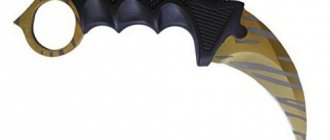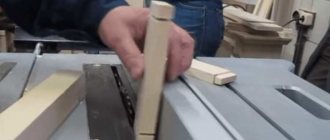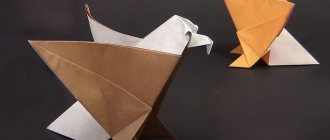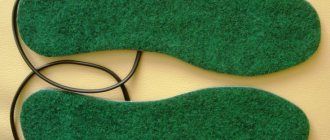Good day to all! This post will be dedicated to all radio amateurs, or those who are thinking about taking up this simple task. We will talk about such an interesting thing as a “cordless soldering iron”.
It all started when I accidentally saw on the Internet an interesting, previously unseen thing called a cordless soldering iron. And after that I set out to make myself something similar. You can find out what came of this at the end of the article.
For a better understanding, I am attaching a detailed photo report + description.
Materials and tools
To make a cordless soldering iron I needed:
Tool:
- drill;
- soldering iron;
- hacksaw for metal;
- stationery knife;
- glue gun;
- scissors.
Material:
- broken power bank (case base), you can take any tube of the required diameter;
- battery type 18650 (IMPORTANT!!! take without protection, otherwise it will not work properly, since the short circuit protection is triggered and the tip cools down quickly);
- Li-ion battery charge module TP4056;
- small switch;
- plumbing coupling;
- washer (size matched to the size of the coupling);
- collet;
- tip (bought on Aliexpress, in the search bar I wrote “tip for usb soldering iron);
- two 5 mm LEDs;
- 100 ohm resistor;
- self-adhesive under the skin.
Let's summarize the tests
Advantages of a cordless soldering iron
- high power
- heats up quickly
- quite light
- fits well in the hand
- sufficient operating time on one charge
- excellent workmanship
Disadvantages of a cordless soldering iron
- no temperature control
- no replacement tips available
Yes, a display with a thermometer, like this digital soldering iron, would definitely not go amiss. Later I measured the resistance of the heater - it is about 0.5 Ohm. Power increases with the square of voltage, so at a nominal voltage of 3.7V we get over 27W, so everything is fine. In my opinion, the soldering iron is simply excellent, and I can confidently recommend it.
Vladimir Zatsepin
Making a soldering iron
And so, to begin with, I took my broken power bank, and disassembled it into its components, removed the electronic filling, and left only the essentials.
Next, I took the tip, which it was decided to fasten into the collet chuck I had; I took the largest collet that was available (3.2 mm).
After the sting was in place, I selected a washer to match the size of the power bank tube, and used a file to sharpen the collet chuck to the required diameter, so that it would fit tightly into the hole.
Then I decided to add a backlight, as this would be very helpful when soldering various small elements.
I made markings on the washer for two holes; two 5 mm LEDs will be placed in them.
Next, I had to go shopping and look for a plumbing coupling like this (I don’t remember the exact name), it fit perfectly in terms of the inner and outer diameter of the tube.
This is how I planned to arrange everything.
Using a hacksaw, I shortened the coupling a little, since it interfered with further placement of the battery inside the tube.
I secured the coupling using 4 small self-tapping screws, drilling holes of a slightly smaller diameter, screwing the screws in with a little force, thus cutting threads for them. Then I started soldering everything, soldered the LEDs together in parallel, and added heat shrink to prevent short circuits.To reduce the current consumption of the LEDs, I added a 100 ohm resistor to the positive wire.
Then I connected the positive wire to the tip (the core of the tip is +), and added an insulating fiberglass tube.
After that, I soldered the wire to the resistor, then to the central wire, then heat-shrinked everything.
Next, I soldered the negative wire to the LED and to the body of the collet chuck.
When part of the work was done, I wanted to visually decorate the body of the soldering iron, since it was quite worn out and did not evoke a feeling of beauty. For this I used self-adhesive with imitation leather, I liked it the most.
I cut everything according to size and then glued it on.
Let's move on.
We fix the washer to the coupling; for this I drilled two holes and secured it with two small self-tapping screws. If necessary, everything will be easy to understand.
Next, when everything is secured and the wires are removed, you can continue soldering all the elements.
To begin with, I take a tray from a power bank and modify it a little, namely, I install a Li-ion battery charging module, and cut out a place for the switch, fixing everything with hot-melt adhesive.
Then I install the battery and solder the wires to the charge module, then to the switch, etc. I will not describe this process in detail, for this I am attaching a connection diagram.
Requirements for sleeping bags
The basic requirements for such tools include:
- Battery life. The parameters must be optimized for long-term operation so that the soldering iron turns out to be a truly useful thing that can actually solder several contacts before everything runs out.
- Sufficient power level. The nominal value of many models is 8 W, but if the actual parameter is less than declared, this may lead to problems when the tip does not heat up to the desired temperature.
- Ease of use. Each model has its own design and its features may affect how the work is carried out. This is not a completely individual parameter, since a bad design will be noticeable to both a beginner and a professional. Unbalanced weight distribution and an uncomfortable grip position can play a negative role when working.
- The presence of protection for the sting. A plastic case with internal fastening or a special attachment will help protect the device from damage. This has nothing to do with operating parameters, but a tool without such things may be damaged when carried.
TOP 5 best soldering irons for batteries
You can find many different models on the market, which are now produced by different manufacturers. This gives a good choice for those who want to find the right option. Among them are the following options:
Photos of a homemade cordless soldering iron
Everything is soldered and ready to go.
Testing a homemade soldering iron
I'm checking for functionality.
The charge indication is visible through the hole made near the switch; I did not display a special LED, since it is already built into the charge module.
If necessary, when the battery runs out, I connect the soldering iron to the power bank, and thus continue soldering.
Homemade cordless soldering iron and Power bank
On my own behalf, I would like to add that the soldering iron turned out to be successful, it really helps me out, especially in those moments when I need to solder something and there is no outlet nearby, or I just don’t want to bother with the wires from the mains soldering iron.
Application
Despite its compact size, this soldering iron can heat the tip up to 450 ℃. The charge of two batteries is enough for several rations.
Due to the fact that the presence of batteries in the design makes the tool quite heavy, and the time of use is limited, it is not practical to use it in the workshop for everyday installation work. But when repairing radio equipment, when the use of extension cords is impossible, this will be a completely justified decision.
Currently, the choice of battery-powered soldering irons is huge, but the price of models worthy of at least some attention, presented in numerous online stores, is quite high.
If you plan to use an electric soldering iron not very often, it is irrational to pay 1500-2000 rubles for it. It is quite possible to make such a tool yourself.
Of course, such a soldering iron will not be so ergonomic, but it will be able to perform its functions, and the costs of its manufacture will pay off instantly.











